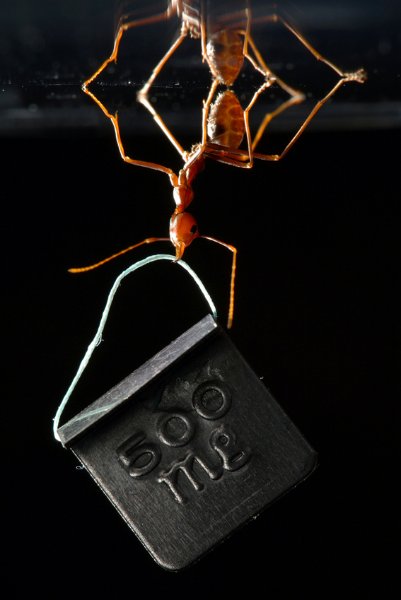

There’s not a whole lot to we can say to preface this photo except yes, it is real. The image of the tiny Asian weaver ant clinging upside-down to a smooth surface holding a 500 mg weight – that’s 100 times its body weight – captured first prize in the first Biotechnology and Biological Sciences Research Council (BBSRC) science photo competition, and with good cause; not only is it an amazing close-up of a tiny creature, but it captures some pretty amazing biology as well.
The weaver ants’ feet sport tiny wet pads that take advantage of the same properties of surface tension that cause wet microscope slides to stick together, allowing them to scale even the smoothest surfaces. But the real biological trick is in the ants’ control of surface area; when their load is light, they can fold up their feet to decrease surface contact, reducing their adhesion and allowing them to move freely. But when hauling a heavy payload like the ant above, they can unfurl those feet to lay down a lot of surface tension, creating a body-weight-to-payload ratio that is pretty incredible.
While the static image above is the award-winner, the video below captures these sticky little workhorses in action.
